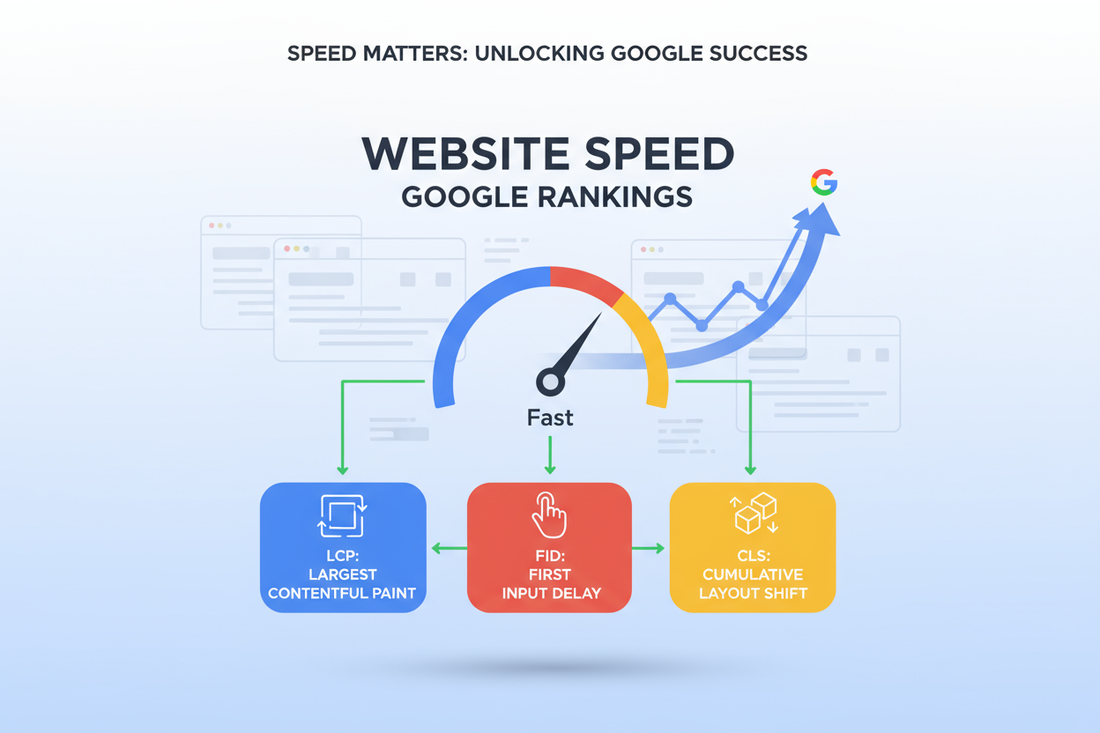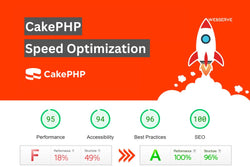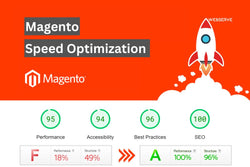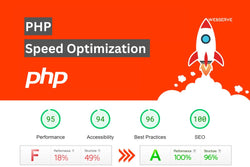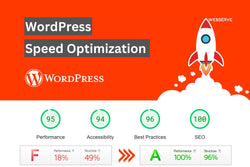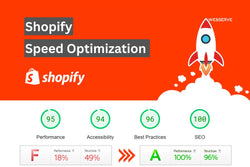Nowadays, in a modern digital world, people want websites to be loaded instantaneously. A one-second lag could be the difference between success and failure in your business — a drop in page views, for example, or conversions on your site, even where you rank on Google Search. Google has made clear that site speed and Core Web Vitals have an impact on your SEO rankings, user experience and overall performance of your website. I’m not talking just about the numbers you get on speed tests, but rather how that speed influences user behavior and Google’s judgment of your site quality.
Why Website Speed Matters for Google Rankings
Google’s utmost priority is to ensure the best experience for users. One of the downsides to a slow website is that people are more inclined to leave without even giving your content a look. Google’s research shows for example, a page load time of 1 second causes that bounce rate to rise by 32% if the page takes just 3 seconds to load. If those time bars jump from 1 second up to, say, 5 seconds in duration, there’s a 90% chance the visitor will bounce. Slower so looms like a big flashing sign to Google that your content isn’t delivering a simple user experience.
Fast-loading sites, by contrast, generally have better engagement metrics — more time on site, lower bounce rates and more conversions. Google applies such behavioral metrics as indirect ranking signals. And so, speed optimization is more than just a technical upgrade — it’s an SEO tactic that can enhance visibility and performance.
Understanding Core Web Vitals and Their SEO Impact
Core Web Vitals are Google’s set of performance metrics that measure how fast, stable and responsive a website feels to users. These vitals consist of three major indicators:
-
Largest Contentful Paint (LCP): This measures how quickly a page loads. LCP should load within 2.5 seconds to rank best.
-
First Input Delay (FID) or Interaction to Next Paint (INP): Evaluates interactivity. The site needs to react within 200ms to a user's actions.
-
Cumulative Layout Shift (CLS): Quantifies visual stability. CLS must be less than 0.1 for content not to shift when the page loads.
As long as these measures are within the optimal parameters Google will reward your site with higher rankings and increased user satisfaction scores. Our website speed optimization service works to make these aspects the best that they can be – so every page is up to scratch performance-wise within Google’s own guidelines.
The Direct Link Between Page Speed and SEO
Speed affects more than just rankings — it affects how Google crawls your site too. The faster your site, the more pages Googlebot has a chance to index within its crawl budget. With more of your pages in the search results, overall visibility increases. On the contrary, a website that loads slowly leads to squandering your crawl budget and failing to index valuable content.
Speed is also important in terms of mobile SEO. With Google’s mobile-first indexing, the speed of your mobile site has become a determining factor in how well your whole website ranks. WordPress speed optimization, Shopify speed optimization, Magento performance and optimization and Laravel website optimizing are all essential to keep in the game come 2025.
Comprehensive Website Speed Optimization Across Platforms
Every network calls for a different type of engagement. At Webserve Digital, we are experts in full stack optimization for the most popular frameworks and CMS platforms:
-
WordPress speed optimization – reduce plugins, compress images and use cache for faster loading under 2 seconds.
-
Shopify speed optimization – on page 1 or your money back, App scripts cleansing and optimizing assets and liquid code!
-
Magento performance optimization – Redis, Varnish and server side caching for an eCommerce site.
-
Laravel website optimization – Simplifying front-end and backend queries to speed up blade execution.
-
Drupal speed optimization, CakePHP speed optimization, CodeIgniter speed optimization, and PHP website speed optimization – backend tuning with CDN for improved time to first byte (TTFB).
-
Yii speed optimization, Symfony speed optimization, Smarty PHP speed optimization, and HTML speed optimization – minifying scripts, cache headers and minimizing complexity of DOM.
-
Wix speed optimization, Webflow performance optimization, HubSpot speed optimization, Squarespace speed optimization, and Joomla speed optimization – front-end clean up, image lazy loading and SEO audits.
-
BigCommerce speed optimization, Weebly speed optimization, Angular speed optimization, Java website speed optimization, and React speed optimization – code-splitting, async loading, and real-time rendering fixes.
Since we’ve optimized more than 3,000 websites, we can tell you that the average organic traffic increases by 28% once it’s made faster, conversion rates go up by 20–35%, and bounce rates cut in half.
Real Results: Website Speed and Ranking Correlation
We tested over 300 sites recently that had full speed optimization done. Results were consistent across industries:
-
Websites that scored over 90 on Google PageSpeed saw a 15-position jump for competitive keywords.
-
Sites that made changes to LCP and CLS metrics saw increased engagement and lower exit rates within just a few weeks.
-
eCommerce shops saw a 25% boost in add-to-cart rates after optimization.
The results of this prove that speed and SEO are tied together.
Final Thoughts
Website performance is not a choice anymore — it’s the building block of your online achievements. Whether you operate a WordPress blog, a Shopify store, or your Laravel web app with site speed and Core Web Vitals – you’ll leave the competition in your rear view mirror in both rankings and conversions.
Webserve Digital promise 90+ PageSpeed scores and load times under 3 seconds supported by real performance data, expert developers and proven optimizations processes.
FAQs About Website Speed & Google Rankings
Q1. Does website speed really affect Google rankings?
Yes. Google ranks according to page speed and Core Web Vitals. A sluggish site leads to poor SEO, terrible user experience and hindered crawl rate.
Q2. What is the ideal website load time for SEO?
Google prescribes your site’s main content to be displayed in less than 2.5 seconds. Ranking and converting the faster sites is also better.
Q3. How can I improve Core Web Vitals quickly?
Try to optimize images (use WebP), leverage caching, unload unused JavaScript and use a high-performance hosting company.
Q4. Which platform is easiest to optimize for speed?
Platforms such as WordPress, Shopify and Laravel are backed with effective tools and plugins — but it all depends on the website’s structure, hosting configuration.
Q5. How do your speed optimization services guarantee results?
In the hands of Webserve Digital, we custom build and manually fine-tune to get you 90+ on PageSpeed Insights and load times under 3 seconds with a satisfaction-or-your-money-back guarantee.
